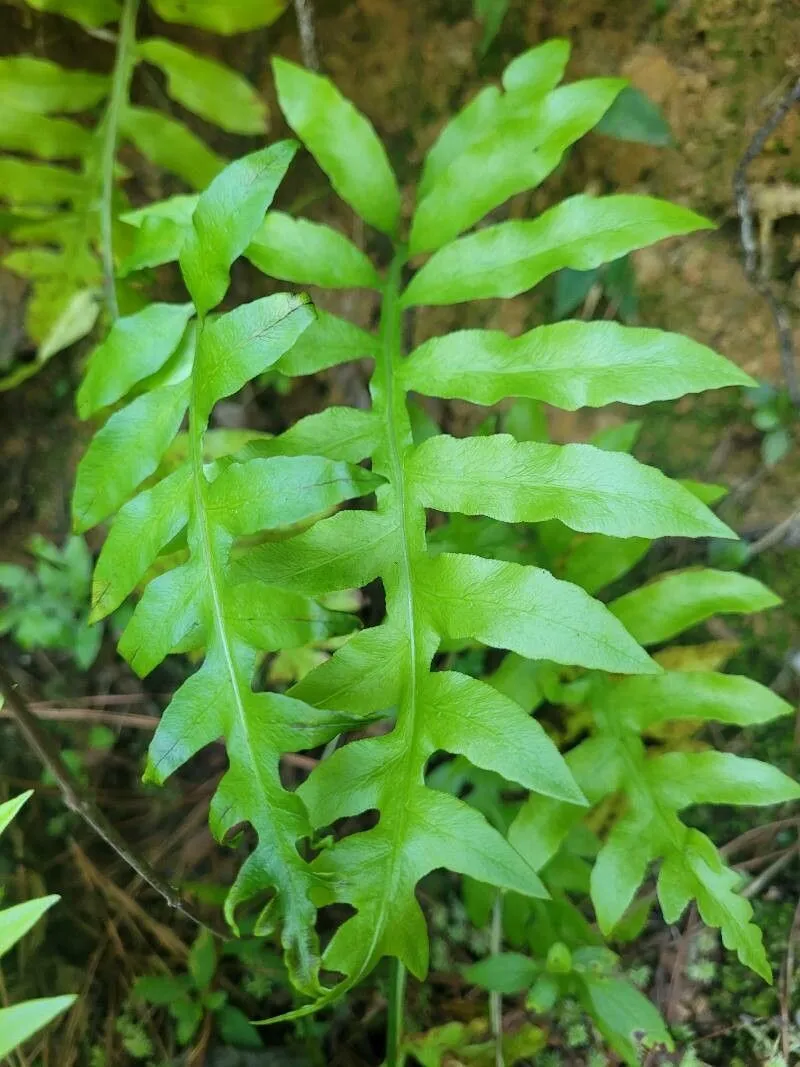
Author: (L.) T.Moore
Bibliography: Index Fil.: xlv (1857)
Year: 1857
Status: accepted
Rank: species
Genus: Woodwardia
Vegetable: False
Observations: Nova Scotia to U.S.A.
The Netted Chain Fern, scientifically known as Woodwardia areolata, is a distinctive member of the Aspleniaceae family. This elegant fern is celebrated for its intricate frond patterns and resilient nature, thriving in diverse climates ranging from the serene woodlands of Nova Scotia to varying regions across the United States.
Woodwardia areolata was first formally described in 1857, notably detailed in Index Filicum by botanist Thomas Moore, denoting its longstanding establishment within botanical studies. This hardy species is especially identifiable by the characteristic net-like, reticulated structure of its veins, which grant it the common name, “Netted Chain Fern.”
Growing predominantly in shaded, moist environments such as bogs, swamps, and forest floors, the Netted Chain Fern is well-favored for its ability to cover grounds with rich, green foliage. This fern’s adaptability to different light conditions makes it a striking addition to both natural and managed landscapes, contributing not only to ecological diversity but also to the aesthetic value of the habitats it occupies.
Ecologically, the Netted Chain Fern plays a critical role in maintaining moist, shady understories, supporting a variety of fauna and contributing to soil health through its decomposing fronds. Its persistent and widespread nature signifies its importance and versatility within its native ranges.
Whether admired in its natural settings or cultivated for ornamental purposes, Woodwardia areolata remains a botanical treasure, intertwining beauty and ecological significance through its unique structure and enduring presence in North American flora.
En: Netted chain fern, Netted chainfern, Chainfern
Taken May 7, 2021 by Lauren Gensey (cc-by-sa)
Taken Aug 3, 2022 by Eric Walton (cc-by-sa)
Taken Apr 3, 2022 by allison fincher (cc-by-sa)
Taken Apr 27, 2021 by Becca McCoy (cc-by-sa)
Taken Apr 13, 2021 by Mikey Johnson (cc-by-sa)
Taken Oct 22, 2014 by EOL − Ann Walter-Fromson (cc-by-nc)
Taken Oct 19, 2014 by EOL − Laura Clark (cc-by-nc)
Taken Oct 15, 2014 by EOL − Laura Clark (cc-by-nc)
Taken Jul 22, 2013 by EOL − Danielle Brigida (cc-by-nc-sa)
Taken Nov 9, 2012 by EOL − Charlie Hohn (cc-by-nc)
Taken Aug 18, 2020 by Christophe Christophe (cc-by-sa)
Taken Jun 16, 2015 by EOL − fungjustin_112 (cc-by-nc)
© copyright of the Board of Trustees of the Royal Botanic Gardens, Kew.
Growth habit: Forb/herb
Family: Myrtaceae Author: (F.Muell.) K.D.Hill & L.A.S.Johnson Bibliography: Telopea 6: 402 (1995) Year: 1995 Status:…
Family: Rubiaceae Author: Pierre ex A.Froehner Bibliography: Notizbl. Bot. Gart. Berlin-Dahlem 1: 237 (1897) Year:…
Family: Sapindaceae Author: Koidz. Bibliography: J. Coll. Sci. Imp. Univ. Tokyo 32(1): 38 (1911) Year:…
Family: Asteraceae Author: A.Gray Bibliography: Pacif. Railr. Rep.: 107 (1857) Year: 1857 Status: accepted Rank:…
Family: Fabaceae Author: Medik. Bibliography: Vorles. Churpfälz. Phys.-Ökon. Ges. 2: 398 (1787) Year: 1787 Status:…
Family: Aspleniaceae Author: (Cav.) Alston Bibliography: Bull. Misc. Inform. Kew 1932: 309 (1932) Year: 1932…